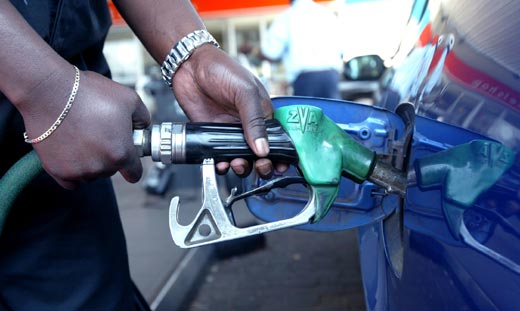Govt to revise 2023 GDP growth upwards
FINANCE minister Mthuli Ncube yesterday said Zimbabwe’s gross domestic product (GDP) growth prediction of 3,8% was understated because of improved agricultural performance.
The government expects to harvest 2,3 million tonnes of maize this year, a 58% increase from the previous season, due to favourable rainfall.
Addressing delegates attending the Zimbabwe International Trade Fair (ZITF) Business Conference, Ncube said due to excellent agricultural performance, the country’s GDP could expand above the prior prediction of 3,8% growth.
“We expect growth of at least 3,8%, I’m very pleased with what I’m seeing in the agriculture sector and that’s going to give us a good (output) beyond what we had anticipated. Also, the strong performance from the industry, the 70% of the domestic goods on our shelves shows that real value addition is happening,” he said.
“The investment in the mining sector, we’re not even budgeted for the inflows from the exports of lithium and other minerals, so that also should push up our expected growth this year beyond 3,8%.”
Ncube also said the tourism sector was performing well, with some hotels at the country’s tourism destinations registering 100% occupancies over the weekend.
“So that tells you the sector is doing very well and all of this work augurs well for our outlook. So, don’t be surprised to hear me upgrade our GDP growth formally. I have already signalled this beyond the 3,8%.”
The International Monetary Fund (IMF) recently projected that Zimbabwe’s economy would grow by only 2,5% this year and 2,6% in 2024.
However, the projection for 2023 was a downgrade of 0,3 percentage points based on an upward revision of 81,2 percentage points in the IMF’s annual inflation rate for the year to 181,2% for Zimbabwe.
Tony Hawkins, a leading economist last week cast doubt on the IMF’s 2,5% GDP growth projection for Zimbabwe, saying the global lender relied on outdated data in coming up with its conclusion.
The IMF also revised Zimbabwe’s annual inflation outlook, predicting the figure to remain in the triple digit range.
Its projections are based on protracted shocks on Zimbabwe’s economy stemming from high inflation, foreign currency shortages, exchange rate volatilities and a deepening power crisis, projected by the Zimbabwe National Chamber of Commerce to likely cost the economy US$4 billion this year.
Zimbabwe’s month-on-month blended inflation surged last month, reaching 0,1%, compared to -1,6% in February. Blended annual inflation slowed to 87,6% during the period, dropping 4,7 percentage points from 92,3% in February.
Ncube said the government was working hard to tame inflation. The Reserve Bank of Zimbabwe recently further lowered the bank policy rate from 150% to 140% per year.
In February, the bank policy rate was lowered from 200% to 150% annually to better reflect the inflation forecast.
For the productive sectors, including individuals and micro, small and medium-size enterprises, the lending rate on the medium-term bank accommodation facility was reduced from 100% to 75% per annum.
As part of stringent monetary policy steps to rein in runaway inflation, the bank policy rate was raised to 200% from 80% last year. This occurred after speculative bank borrowing to fund activities on the parallel market spiked, which caused the Zimbabwe dollar to lose value against key currencies like the US dollar.-newsday










